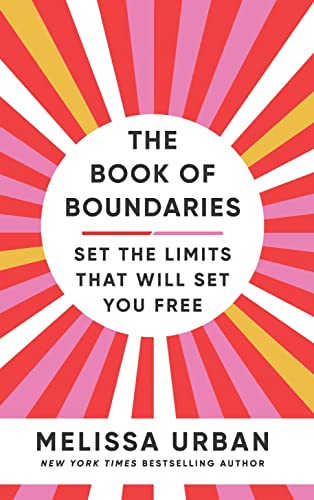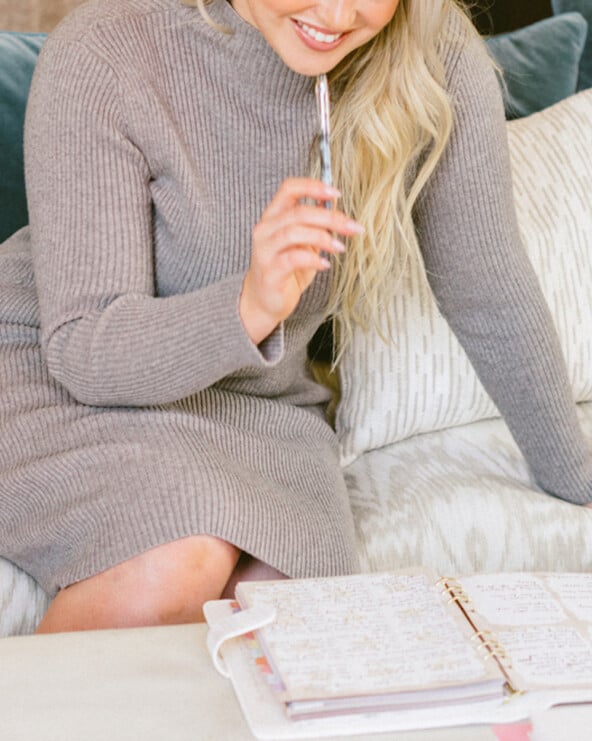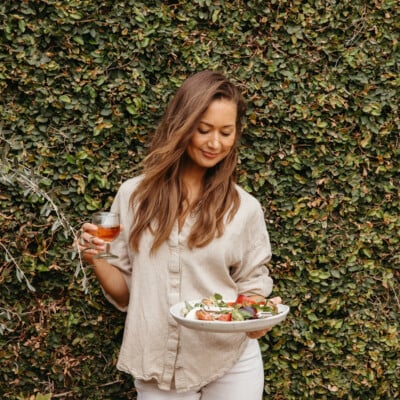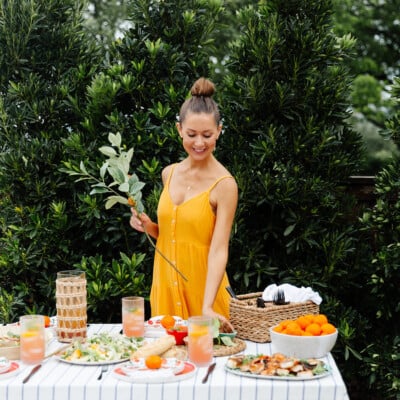Several years ago, fresh off the heels of a stressful news job, I became obsessed with how to set boundaries. Stressed and tired, I was searching for a way to break the spell of feeling controlled—by jobs, bosses, companies, relationships, and even society. I was on a mission to find some relief and autonomy.
Interestingly, I wasn’t alone. I can’t report exactly when setting boundaries started to seep into the zeitgeist, but it seemed one day the concept was everywhere. Brilliant minds in mental health, somatic healing, and spiritual guidance were touting the need for people to reclaim their time and space. Influencers were exclaiming about the power of guardrails. Friends and strangers were dropping the word in texts, stories, and articles. “I gotta set boundaries.” “I’m saying no!” “We all need to put up parameters.” (A former colleague of mine put tape around her desk to tell people when not to come knocking.)
Featured image of Jules Acree by Michelle Nash.


It seemed like the question of how to set boundaries became the rallying cry of our time. A way to find the light in an overworked, desensitized world. But I couldn’t help but wonder: Were boundaries just us turning against one another?
A New (and Refreshing) Look at Boundaries
Over the years, as I’ve dug deeper into how to set boundaries for myself, I’ve had the professional privilege of interviewing incredible thought leaders on this topic and why they feel it’s critical. I’ve talked to Nedra Glover Tawwab, Amina AlTai, and Alex Elle, to name just a few, about how and why we need to stop people-pleasing and stand up for ourselves. Reflecting on the wisdom I’ve gleaned, I’ve come to realize that, on some level, we’re all yearning for the same thing: to be seen, known, and respected.
One woman who has cast the brightest light on this as of late is Melissa Urban. The founder of Whole30 and a multiple-bestselling author, Urban has a razor-sharp knack for delivering what our tired culture always seems to need. Her latest book, The Book of Boundaries: Set the Limits That Will Set You Free is stunning proof. Just as my desire to learn more about the topic started to atrophy, Urban swoops in with fresh, to-the-point insight that is not only helpful, but freeing. She sets the tone to help us see what we need, first. What’s most genius is that she offers insightful case-by-case boundary-setting conversation starters.
Here I’ve outlined my top takeaways on boundaries from Urban’s work. As she writes, she’s known as “The Boundary Lady” in certain circles. It’s a well-earned title for the countless people she’s helped (myself included). Boundaries, she shows us, aren’t for pushing people away. They’re for building better relationships—especially the ones we have with ourselves.

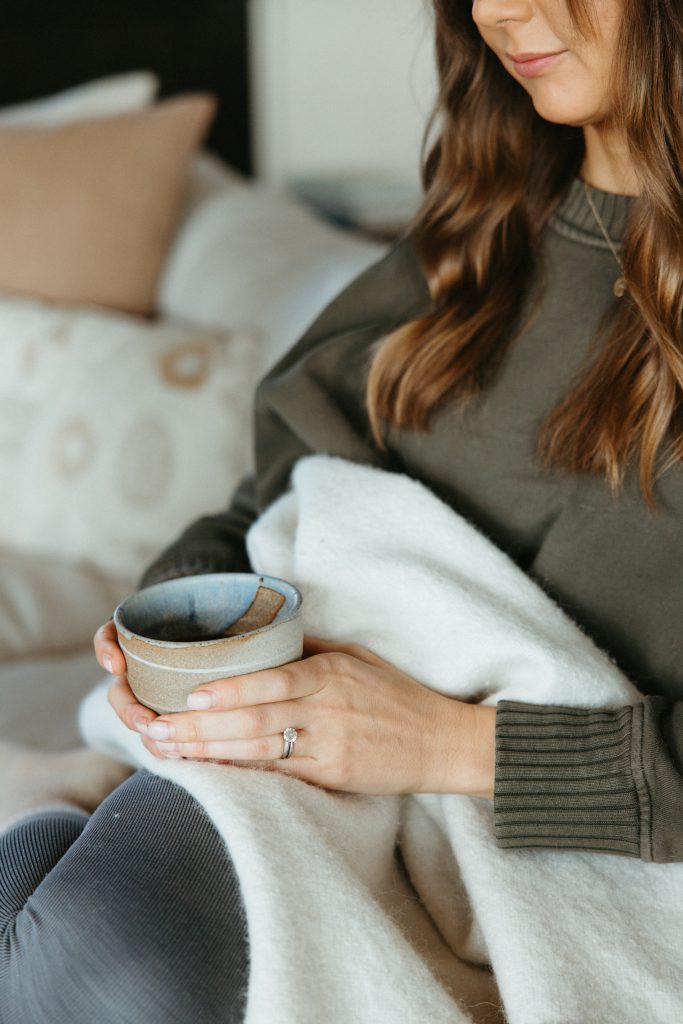
What are boundaries?
Before we dig into my takeaways from Urban, let’s define what a boundary is.
Urban defines boundaries “as clear limits you establish around the ways you allow people to engage with you so that you can keep yourself and your relationships safe and healthy.” She says to envision a circle: Anything outside the curved line is something that makes you feel unsafe, bad, or generally not good. Anything inside is something that makes you feel healthy and good.
You may be thinking: Are boundaries a way to tell someone what they can or cannot do? Urban clarifies this with an immediate no. “That would be controlling,” she writes. “Boundaries are established to help you plan and communicate your response to what others say or do.”
Boundaries Can Be Life-Saving
Urban holds nothing back in her journey of how boundaries first came into her life. To not give away too much of her story (it’s intense, inspiring, and so worth reading for yourself), I’ll say that substance abuse was chipping away at her self-worth and health—until one day she got clear on what she needed to get sober and well. Doing so saved her life, and it stretched her capacity for joy. As she writes, “Because of the guardrails I placed around my recovery, health, and safety, I felt freer than ever, and my life was bigger than I had ever imagined.”
Before Setting a Healthy Boundary, We Must Identify the Need for It
This revelation was the simplest and most profound for me. A boundary helps a relationship or aspect of your life because there is something—anxiety, lethargy, maybe disrespect—that is interfering with how you feel. The way to ease this is to set limits on the perpetrator.
Here’s an example from my life. I was frustrated and burned out after working with a client. I can guess that I spent hours of my week just thinking about this person, whom I like and value, and how I was always feeling drained after meeting with them. And then it hit me: Often our meetings ran well over an hour when they were scheduled for 30 minutes. This was in my control, I realized. I re-emphasized our agreed-upon 45-minute time slot and kindly said I’d be hopping off promptly at the marker. I honored this, and it revitalized my collaboration with this person.
“Because of the guardrails I placed around my recovery, health, and safety, I felt freer than ever, and my life was bigger than I had ever imagined.” —Melissa Urban
Urban says the signs of a needed boundary can vary, from the obvious to the subtle. A few things she suggests looking out for include: dragging energy, anxiety before seeing someone, and feeling like a relationship is one-sided.


Boundaries Aren’t Mean—They’re Kind
Urban says it best: “You’re not being mean when you set boundaries, you’re being kind—to yourself and your relationships,” she writes. I never thought of boundaries this way. Anything that included a parameter I saw as a threat or unkind. But Urban proves that by setting these clear guardrails, you’re taking away oxygen from the bad and putting it toward the good. There’s no need to explain or justify. Be clear, direct, and succinct in the delivery of your boundary, suggests Urban. This then sets up people to respect you and your relationship.
But perhaps the most beautiful truth I’ve learned from Urban is that power, kindness, health, and autonomy can all coexist within us. These vital things aren’t mutually exclusive, nor do they need to be as elusive as they can sometimes feel. Each of us can thrive, not be held down, and have warm, satisfying connections with people. This starts with boundaries. “The limits you put in place around yourself to stay healthy and safe,” defines Urban, so in turn, freedom and joy abound.


